
As a doctoral student in podiatric medicine in 2010, Dr. Caroline Descôteaux, Podiatrist, began her practise in Quebec City before acquiring the Drummondville clinic.
Dr. Marc-André Héroux, Podiatrist, trained in podiatry and microbiology, which allows him to analyze the anatomy, physiology and pathologies of your foot. This ensures you benefit from the best diagnosis possible.
The newest addition to the Drummondville clinic is Dr. Jany-Ève Allard, a podiatrist. She rounds out the trio and uses her knowledge of podiatry medicine to care for you in the most effective way. You can rely on the best possible follow-up to alleviate your foot problems and get back to your daily life.
PiedRéseau Drummondville
350 Rue Saint-Jean #140,
Drummondville, QC J2B 5L4
directions
1-819 473-8400 Toll free
Monday
8:30 - 19:00
Tuesday
8:30 - 19:00
Wednesday
8:30 - 19:00
Thursday
8:30 - 17:00
Friday
8:30 - 16:00
A personalized approach and a dedicated team
The Clinique podiatrique de Drummondville welcomes you to its professional, friendly and caring environment. And we treat you as we would a member of our own family.
The dedication of podiatrists Caroline Descôteaux and Marc-André Héroux allows you to alleviate your foot pain in the most effective way possible. These professionals also know how to explain your condition in a straightforward way so that you can easily understand.
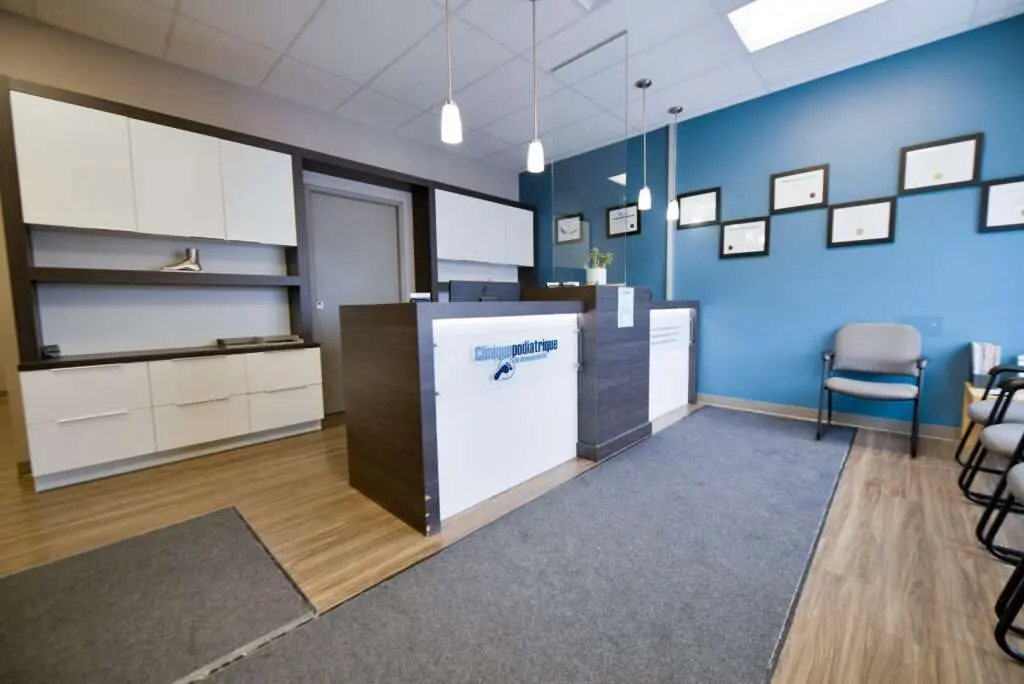
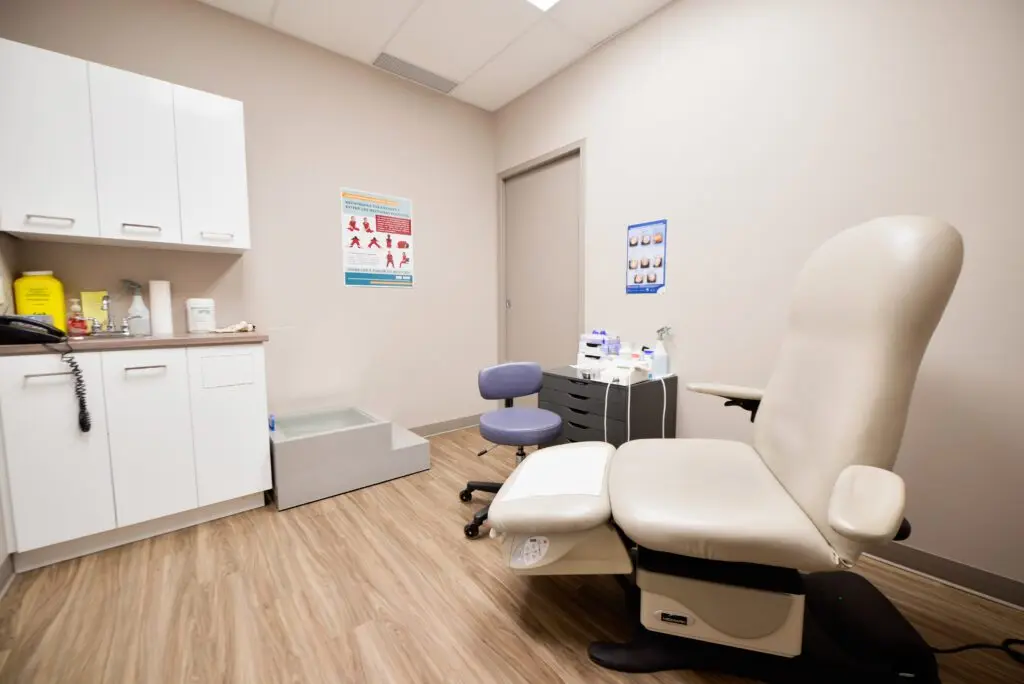


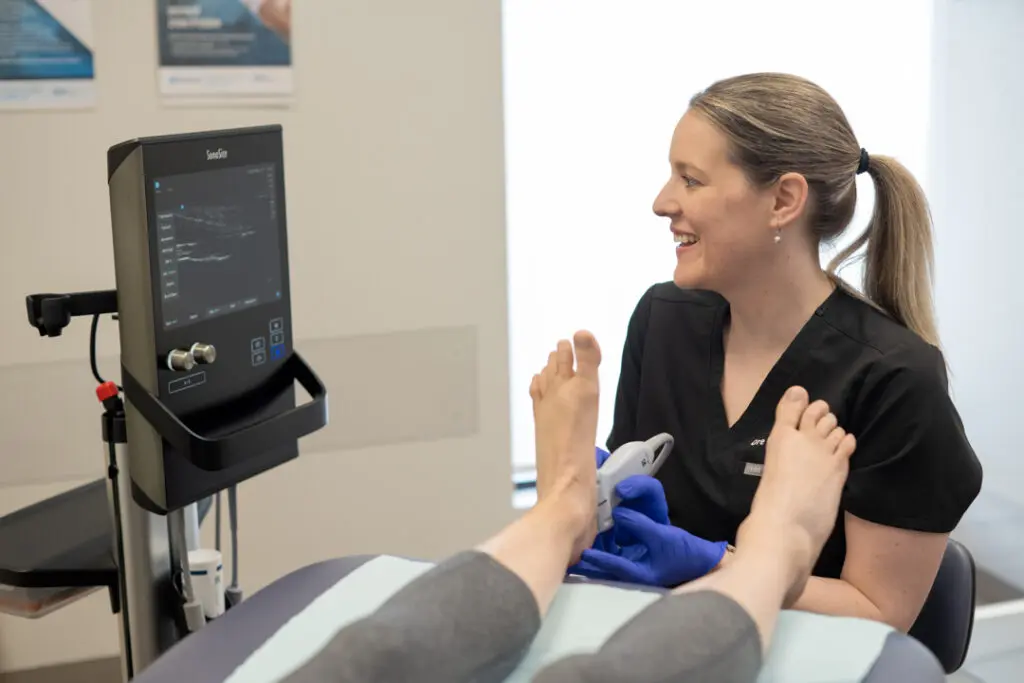
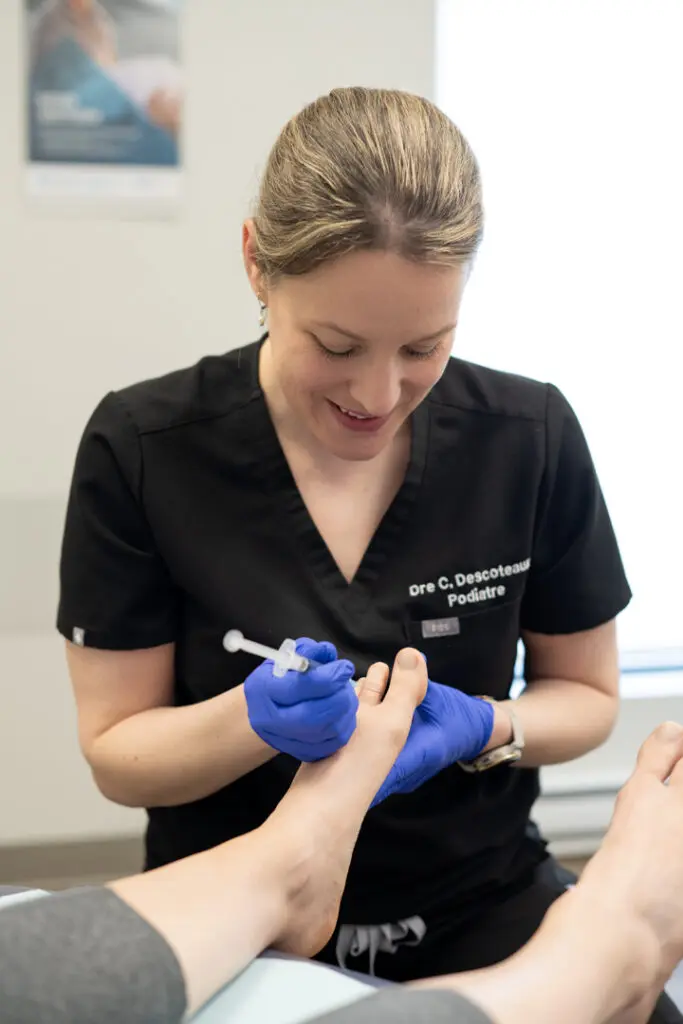
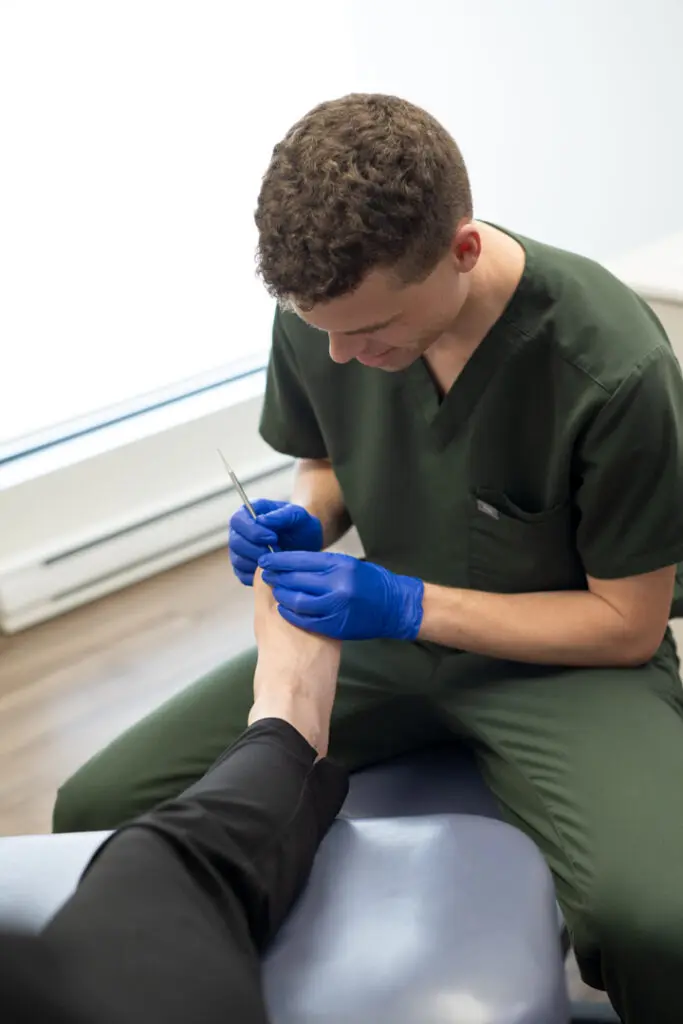

Frequent problems
- Corns, calluses and severe corns
- Pain : foot, ankle, leg, knee, hip and lower back
- Leg disorders caused by venous insufficiency
- Foot arthritis : symptoms and treatments
- Heel spur (Lenoir’s thorn)
- Big toe osteoarthritis (Hallux rigidus)
- Foot bunion (hallux valgus)
- Hematoma under the toenail
- Ingrown toenail (onychocryptosis)
- Foot blisters : symptoms and treatments
- Functional hallux limitus
- Toenail trauma : symptoms and treatments
- Diabetic foot ulcer : symptoms and treatments
- Joint wear and tear : symptoms and treatments
- The bunionette (quintus varus)
Treatments provided
- 2D and 3D digital imaging
- Cortisone injections
- Foot ultrasound imaging
- Evaluating Children’s Feet
- Biomechanical exam : symptoms and treatments
- Ultrasound guided injection
- Nail culture : importance, advantages and procedure
- Therapeutic foot taping
- Plantar orthotics: types, benefits, and adaptation tips
- Foot care – Nails, corns and calluses treatment
- Manual foot therapy : personalized treatment plan
- Ingrown toenail treatment by a podiatrist
- A podiatrist’s treatment for plantar warts
- Therapeutic laser treatment
- Treatment of foot pain by the podiatrist
- Podopediatrics treatments
- Toenail deformity : treatments
- Treatments for paronychia of the toe
- Stress fracture in the foot
- Treating frostbite on the feet and toes
- Treatment for excessive foot sweating
- Partial or complete foot amputation
- Ultrasound treatment
- Orthopaedic shoes : types and benefits
Responsible for personal information/confidentiality: Caroline Descôteaux 819-478-1060
Request an appointment at the clinic
Leave us your contact details and availability and we will contact you to make an appointment.
Please note that if you are seeking podiatry services following a work-related accident (CNESST) or a road accident (SAAQ), please contact us before your appointment to obtain more information about the reimbursement procedures.



